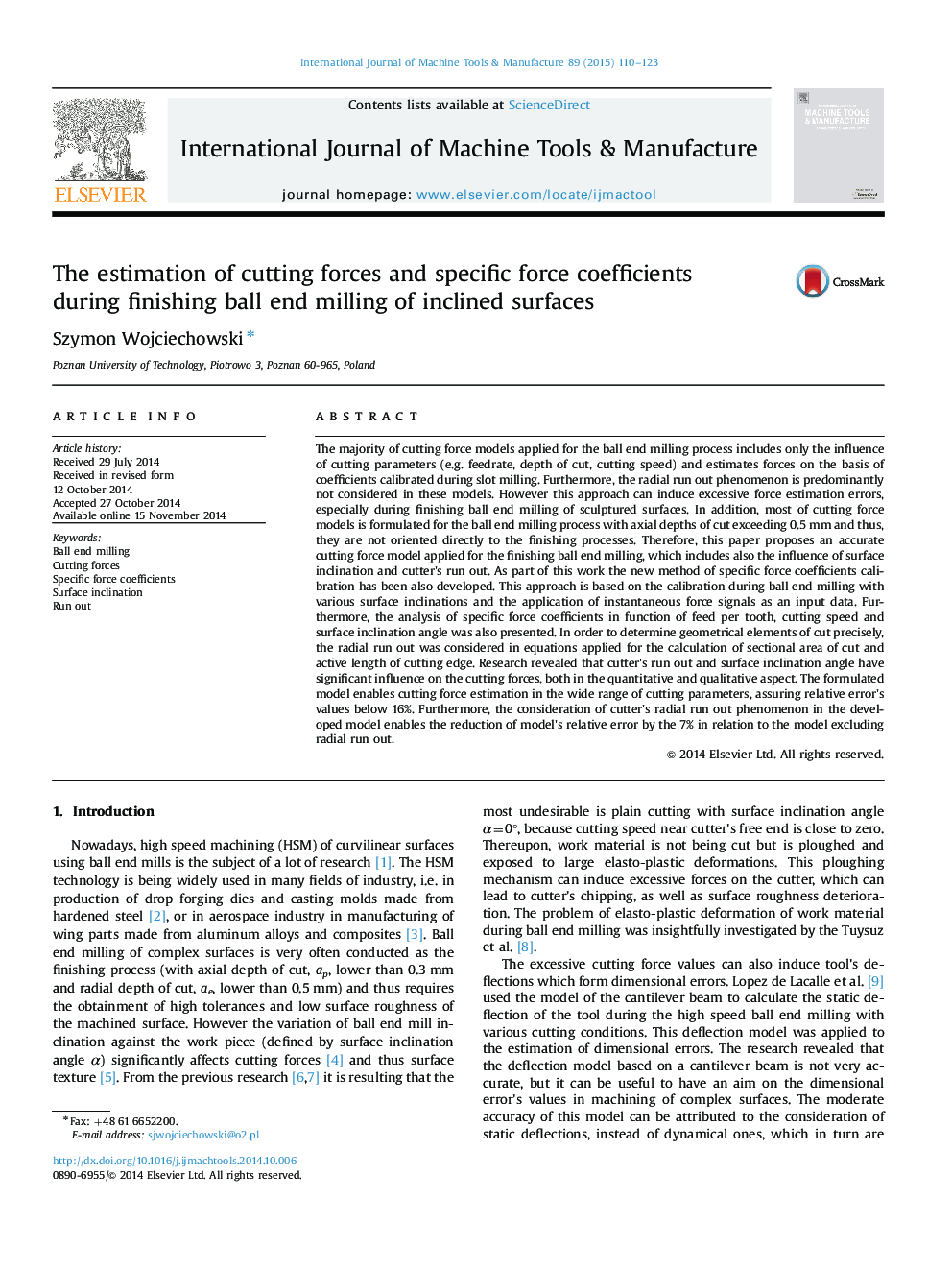| کد مقاله | کد نشریه | سال انتشار | مقاله انگلیسی | نسخه تمام متن |
|---|---|---|---|---|
| 778814 | 1464504 | 2015 | 14 صفحه PDF | دانلود رایگان |
• Cutting force model applied for the finishing ball end milling is proposed.
• Run out is included also in expression of active length of cutting edge.
• Surface inclination has quantitative and qualitative influence on cutting forces.
• Small run out's value (3 μm) can cause influential cutting force variations (~30%).
• Proposed force model enables the obtainment of global estimation errors below 16%.
The majority of cutting force models applied for the ball end milling process includes only the influence of cutting parameters (e.g. feedrate, depth of cut, cutting speed) and estimates forces on the basis of coefficients calibrated during slot milling. Furthermore, the radial run out phenomenon is predominantly not considered in these models. However this approach can induce excessive force estimation errors, especially during finishing ball end milling of sculptured surfaces. In addition, most of cutting force models is formulated for the ball end milling process with axial depths of cut exceeding 0.5 mm and thus, they are not oriented directly to the finishing processes. Therefore, this paper proposes an accurate cutting force model applied for the finishing ball end milling, which includes also the influence of surface inclination and cutter's run out. As part of this work the new method of specific force coefficients calibration has been also developed. This approach is based on the calibration during ball end milling with various surface inclinations and the application of instantaneous force signals as an input data. Furthermore, the analysis of specific force coefficients in function of feed per tooth, cutting speed and surface inclination angle was also presented. In order to determine geometrical elements of cut precisely, the radial run out was considered in equations applied for the calculation of sectional area of cut and active length of cutting edge. Research revealed that cutter's run out and surface inclination angle have significant influence on the cutting forces, both in the quantitative and qualitative aspect. The formulated model enables cutting force estimation in the wide range of cutting parameters, assuring relative error's values below 16%. Furthermore, the consideration of cutter's radial run out phenomenon in the developed model enables the reduction of model's relative error by the 7% in relation to the model excluding radial run out.
Journal: International Journal of Machine Tools and Manufacture - Volume 89, February 2015, Pages 110–123
